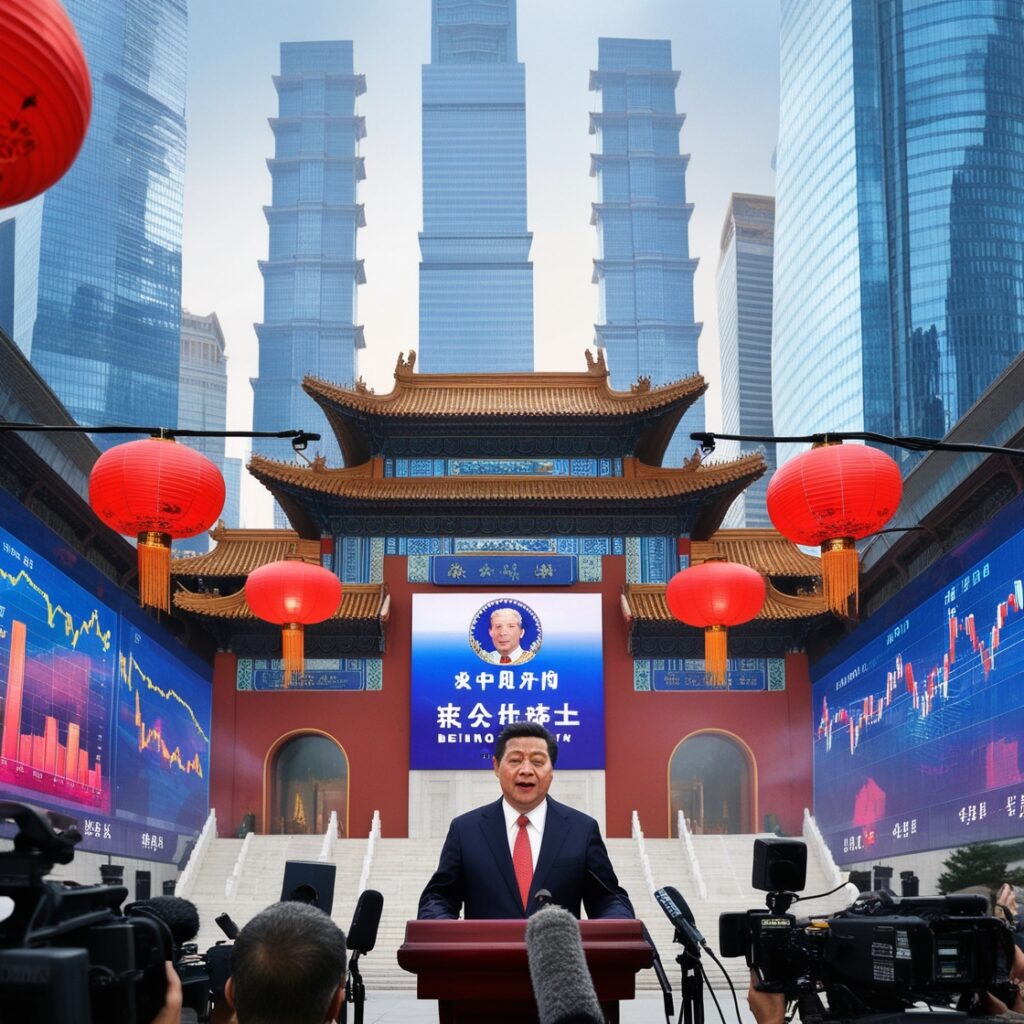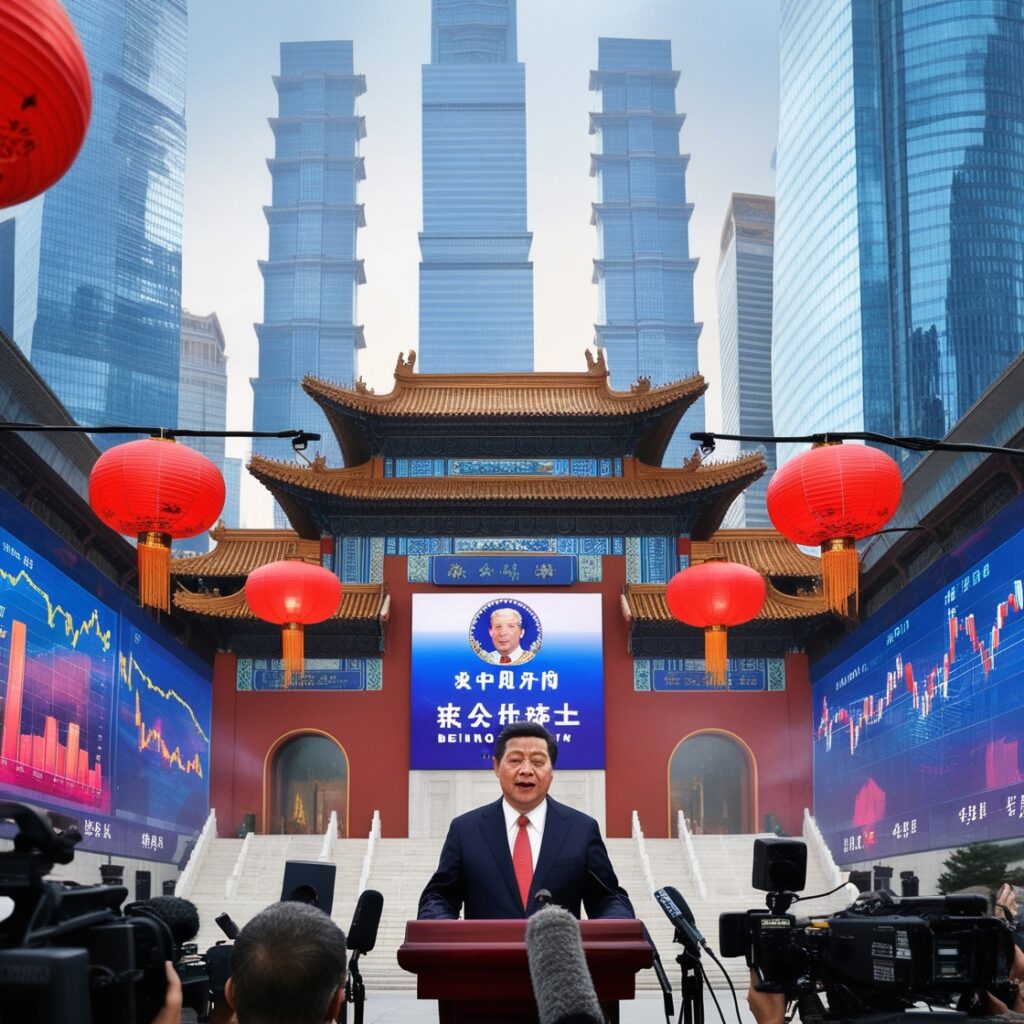Introduction
China is preparing to significantly increase its government debt issuance to revive its economic growth. Finance Minister Lan Foan announced that the government will roll out more counter-cyclical measures this year, though he did not disclose the size of the fiscal stimulus. This move comes as China faces serious deflationary pressures, a property market crisis, and weakened consumer confidence.
Counter-cyclical Measures to Boost Growth
During a news conference on Saturday, Finance Minister Lan Foan emphasized that China has “relatively big room” to issue more debt. The increased spending is aimed at providing subsidies for low-income households, supporting the property market, and recapitalizing state-owned banks. These measures are part of a broader strategy to counteract deflationary pressures caused by the real estate sector’s downturn and to stimulate consumer spending.

Economic Challenges: Deflation and Consumer Confidence
China’s economy, the second-largest in the world, has been impacted by deflationary trends, largely due to the sharp downturn in the property market. In addition, weak consumer confidence has exacerbated the situation, highlighting the country’s heavy reliance on exports. The increasingly tense global trade environment has further worsened China’s economic outlook.
Growth Target in Jeopardy
In recent months, various economic data have missed forecasts, raising concerns that China’s roughly 5% annual growth target is at risk. Economists and investors have expressed doubts about whether the country might be facing a long-term structural slowdown. However, Zheng Shanjie, chairman of the National Development and Reform Commission (NDRC), remains confident that China will achieve its growth target.
September Economic Data Outlook
The data for September, set to be released soon, will provide further insight into the state of the economy. Analysts expect continued weakness in economic indicators. Despite this, the Chinese government remains optimistic about meeting its growth goals.

Speculation on Fiscal Stimulus
The Chinese government’s fiscal stimulus plans have been the subject of intense speculation in global financial markets. A Politburo meeting in September signaled the need for urgent measures to address mounting economic challenges, which briefly spiked Chinese stocks. However, without specific details, the market pulled back shortly afterward.
Details of Planned Fiscal Measures
Reports indicate that China plans to issue special sovereign bonds worth approximately 2 trillion yuan (US$ 284.43 billion) as part of its stimulus package. Half of this amount will be directed toward helping local governments manage their growing debt, while the other half will subsidize purchases of home appliances and fund a monthly child allowance for families with two or more children.
Support for Banks and Sovereign Bond Issuance
In addition to direct fiscal measures, China is considering injecting up to 1 trillion yuan (US$ 142 billion) into its largest state banks to increase their capacity to support the economy through new sovereign bond issuances. However, this plan requires approval from China’s parliament, which is expected to convene in the coming weeks.
Monetary Policy and Central Bank Support
China’s central bank has already introduced aggressive monetary support measures, including efforts to assist the property sector, which has been in decline for several years. Mortgage rate cuts are among the steps taken to stabilize the housing market. However, analysts suggest these measures may not be enough, and that deeper structural reforms are necessary to address the underlying issues in China’s economy.
Structural Issues: Consumption vs. Investment
One of China’s ongoing economic challenges is its heavy reliance on investment-driven growth, often fueled by debt. This has burdened local governments with over US$ 13 trillion in debt, with diminishing returns on infrastructure investments. Meanwhile, household consumption remains weak, accounting for less than 40% of the country’s annual economic output—20 percentage points below the global average.
Support for Local Governments
Lan Foan stated that the central government would assist local governments in resolving their debt issues. He noted that local authorities still have around 2.3 trillion yuan (US$ 325.5 billion) to spend in the last quarter of 2024. This amount includes debt quotas and unused funds, which could help ease fiscal pressure.

Revisiting Land Purchases
One proposed solution involves allowing local governments to repurchase unused land from property developers, providing them with additional resources to address their debt problems. This could also help stabilize the property market.
Conclusion
China’s economic future is at a critical juncture, with the government preparing to implement a combination of fiscal and monetary measures to prevent further economic decline. While these efforts may offer short-term relief, long-term growth will likely require significant structural reforms. Addressing issues such as low household consumption, youth unemployment, and over-reliance on debt-driven investment will be crucial for securing sustainable growth in the future.



